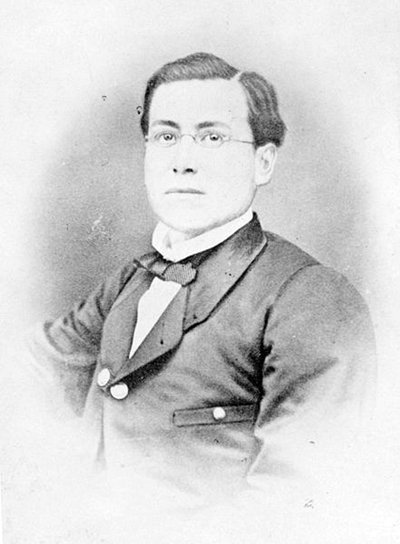Judging from the furious opinions printed in newspapers and
spewed out on TV screens the last few weeks, I suspect people must
believe Morgan Hill citizens truly loathe our nation’s Stars and
Stripes. Lots of folks across America have expressed indignation
with the way Live Oak High School administrators dealt with four
students who sported patriotic attire on Cinco de Mayo.
Judging from the furious opinions printed in newspapers and spewed out on TV screens the last few weeks, I suspect people must believe Morgan Hill citizens truly loathe our nation’s Stars and Stripes. Lots of folks across America have expressed indignation with the way Live Oak High School administrators dealt with four students who sported patriotic attire on Cinco de Mayo. Personally, I find it shocking the media failed to point the finger of blame at the real villain responsible for the May 5 campus commotion. That culprit, of course, is Corona beer.
Many Americans don’t realize that Cinco de Mayo is a minor Mexican holiday pumped up beyond its original relevance by advertising executives trying to sell suds in the United States. If it wasn’t for Corona, Americans wouldn’t celebrate Cinco de Mayo. That’s why I hold the Mexican-made brew responsible for Live Oak’s recent brouhaha.
Cinco de Mayo commemorates May 5, 1862, the day 4,000 Mexican peasants faced Emperor Napoleon III’s army of 8,000 highly-trained, well-armed soldiers in the region of Puebla. The French tyrant believed the Mexicans would offer little resistance to his invasion of their country. The Mexican army, however, was led by General Ignacio Zaragosa, a brilliant military leader born in 1829 in what’s now Goliad, Texas.
Much like George Washington did fighting the British, Zaragosa used guerilla warfare tactics to attack from concealed locations the brightly dressed French dragoons riding on horseback. He achieved a David versus Goliath victory. Zaragosa is so esteemed in his Texas hometown that residents of Goliad put up a statue honoring him.
Zaragosa’s victory at Puebla might have played an important part in the final outcome of the American Civil War. If France had defeated the Mexicans, Emperor Napoleon would have used Mexico as a base to free America’s southern ports of the Union blockade. An opened Confederate supply route would have prolonged the Civil War. Instead, General Zaragosa’s Cinco de Mayo triumph against the French gave the Union Army 14 months to build its forces to achieve a military and moral victory at Gettysburg. Later, the United States, to guard the Western Hemisphere from European control, sent General Phil Sheridan to the Texas-Mexico border to secretly supply Mexican resistance fighters with armaments to drive out Emperor Napoleon’s troops.
About 120 years after the Battle of Puebla, Corona comes into the story. In the 1980s, foreign beers became trendy with American drinkers. Grupo Modelo, the company that makes Corona beer, saw an opportunity to beef up sales in the United States. But competitors started a rumor that Corona contained traces of human urine. An urban legend began circulating that Mexican workers at Corona’s bottling plant were seen peeing into bottles.
Corona’s reputation was badly hurt by these fabrications. Grupo Modelo won a lawsuit that helped the beer maker prove to Americans that Corona was untainted. Then its marketing team came up with a brilliant advertising scheme. No doubt inspired by rocketing sales of Guinness Irish stout every March 17, Grupo Modelo decided to promote a Mexican holiday to encourage beer-loving Americans to imbibe its product. Mexico’s Independence Day’s “Diez y Seis de Septiembre” (Sept. 16) was difficult for most Americans to pronounce. But “Cinco de Mayo” had a lyrical quality. It sounded fun and festive.
Grupo Modelo began promoting Cinco de Mayo across the U.S. in an intensive advertising blitz. It ingeniously connected Corona to the celebration with the slogan “the Drinko for Cinco.” Americans who are always open for an opportunity to party hearty found themselves falling for the fiesta.
Other than in the Puebla region where Zaragosa’s victory against the French took place, Cinco de Mayo simply is not a big deal in Mexico. In the United States in the last 25 years or so, however, Cinco de Mayo has grown into a Hispanic version of St. Patrick’s Day. The fifth of May is a day everyone can enjoy a fiesta celebrating Mexican-American culture.
Because the Battle of Puebla benefited both Mexico and the United States, Cinco de Mayo celebrates our joint-nation friendship. It reminds us that as nation neighbors, we’ve historically helped each other face foreign invasion and threats to our way of life.
The Live Oak High School flag incident on Cinco de Mayo and its aftermath shows how dangerously polarized America has become in how we view our southern-border neighbor. Mexican-Americans should stand proud, knowing their heritage enhances our culture. America would be a lesser land without Mexico as our next-door neighbor.
All Americans should encourage building friendship with Mexico and its people. Next Cinco de Mayo, instead of drinking the bitter brew of divisiveness, let’s commemorate our camaraderie. In the spirit of being the best of amigos, let’s toast our friendship by downing a couple of Coronas.











